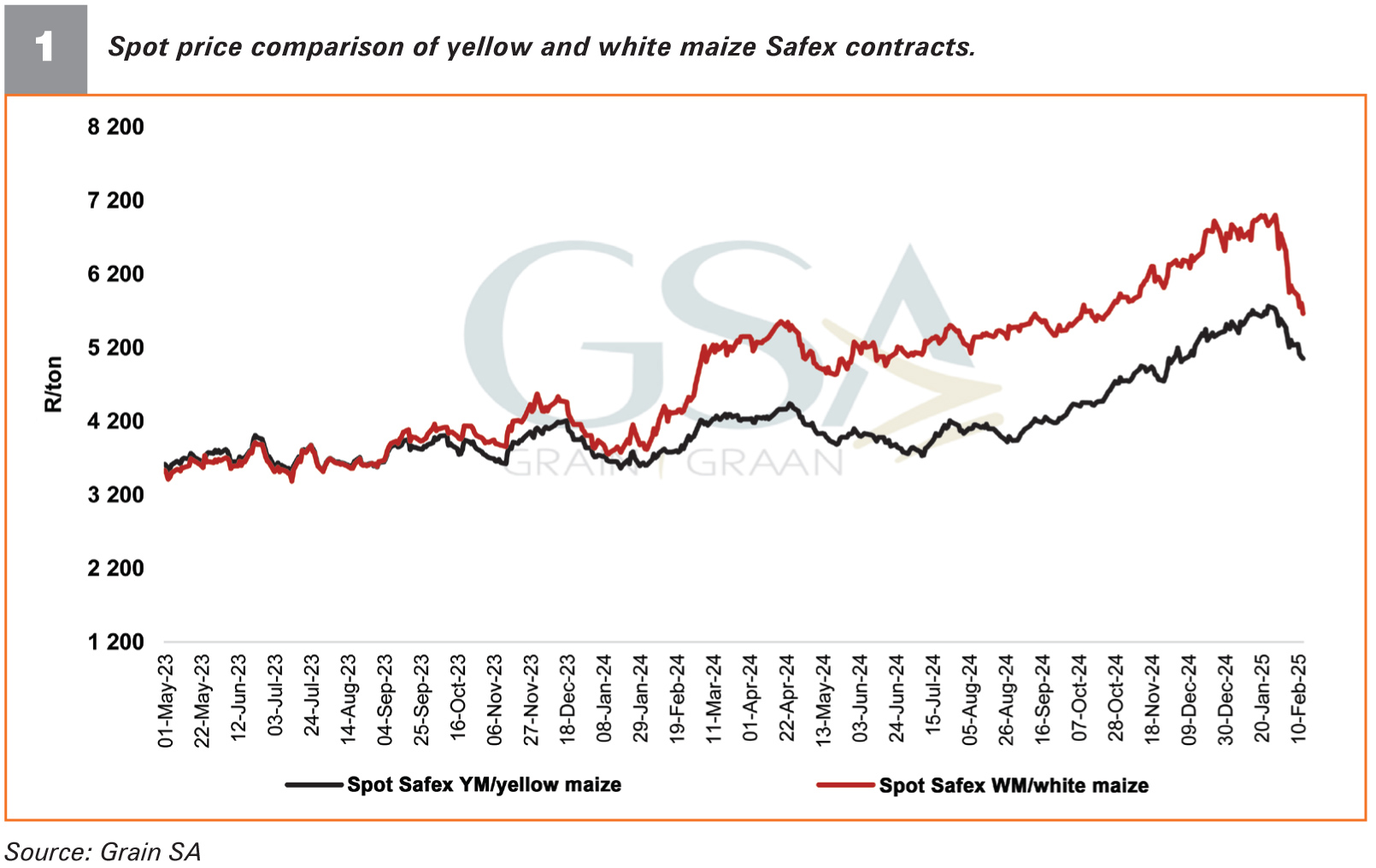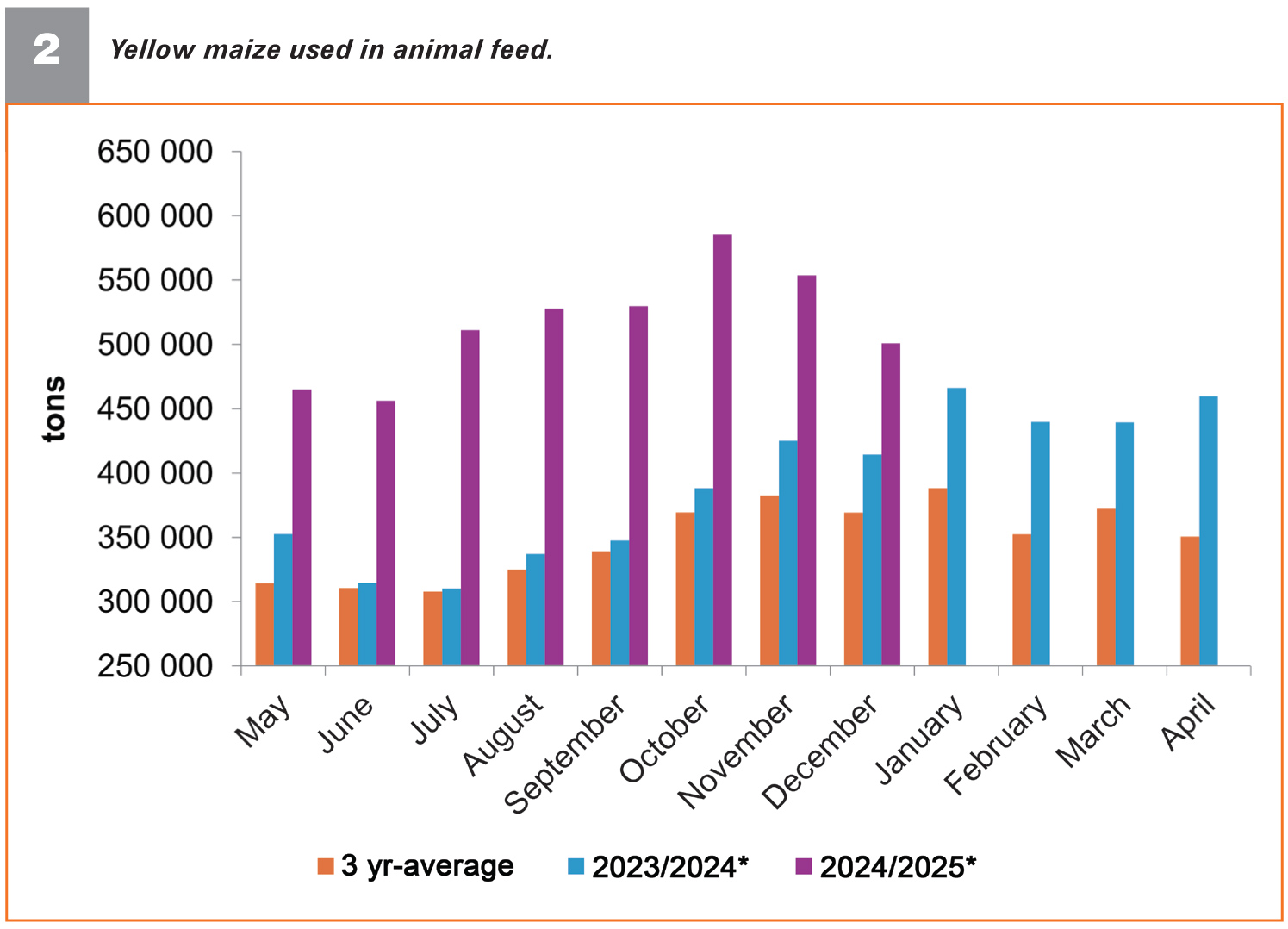May 2025
| MLIBO QOTOYI, AGRICULTURAL ECONOMIST INTERN, GRAIN SA |  |
FARMERS OFTEN SELL THEIR HARVEST IMMEDIATELY AFTER HARVESTING, ONLY TO RECEIVE LOWER PRICES DUE TO MARKET OVERSUPPLY. ADOPTING A MARKETING STRATEGY, STORAGE PLANNING AND MANAGEMENT WILL PROVIDE A SUSTAINABLE AND PROFITABLE FARMING ENTERPRISE. CONNECTING WITH THE RIGHT BUYERS AND SECURING A GOOD PRICE CAN IMPROVE PROFITABILITY.
In today’s agricultural landscape, marketing is as critical as production for success. Global grain markets remain volatile due to geopolitical instability and adverse weather. South African farmers face additional pressures from rising input costs, currency fluctuations and supply chain disruptions. Market access, cash flow, price volatility and infrastructure limitations compound these challenges. Effective marketing strategies are thus essential for farm viability.
Good storage practices are important to prevent after-harvest losses from pests, moisture and spoilage. Storage duration and capacity should be planned so that they link to the market demand period.
In South Africa, maize stocks are the lowest in the months leading to April due to its utilisation for human and livestock consumption. Farmers who store part of their crop until this period benefit from a higher price.
Effective grain storage is a key risk management strategy for farmers. Storing crops to sell during periods of peak demand allows farmers to enhance their revenue. Sound storage practices protect against quality degradation and post-harvest losses.

There are different storage options available:
Here are some practical tips for effective storage:


FIND THE RIGHT MARKET: SELL AT THE BEST PRICE
While storage gives farmers control over timing, knowing where and how to sell is just as important. Smallholder farmers often face barriers to formal markets due to quality requirements, transport costs and buyer preferences.
Maize can be used as animal feed instead of selling it at low market prices. The demand for feed remains stable, especially in drought years. Incorporating maize to provide feed for your herd throughout the year becomes a cost-effective option.
Farmers can improve their profitability by strategically storing grain and exploring alternative markets. Cooperatives and group marketing allow farmers to combine resources and access formal markets that provide a stable market.
To manage risks, farmers should sell some at harvest for cash and store some for later higher prices. A profitable farmer is not just a grower but also a smart seller.
By implementing sound storage practices, leveraging alternative markets and managing risks effectively, farmers can increase their income, strengthen market resilience and build sustainable agribusinesses.
Publication: May 2025
Section: Pula/Imvula